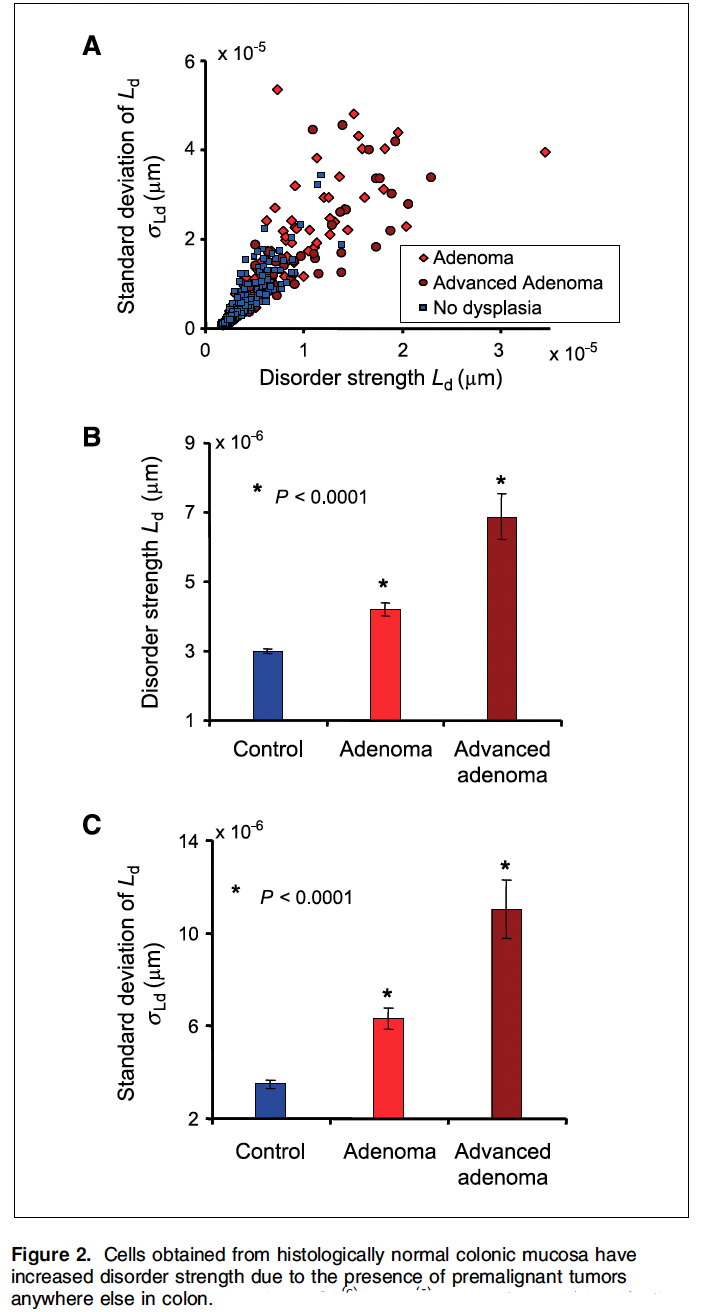NU 2010-131
INVENTORS
- Vadim Backman*
- Dhwanil Damania
- Dhananjay Kunte
- Hariharan Subramanian
- Hemant Roy
- Mart De La Cruz
SHORT DESCRIPTION
This technology offers a novel fecal test that detects nanoarchitectural and molecular markers in colonocytes. It delivers a minimally invasive screening method for early detection of colon cancer.
BACKGROUND
Colorectal cancer remains one of the leading causes of cancer death. Traditional screening methods such as colonoscopy are expensive, invasive, and present significant logistical challenges. Current fecal tests fall short in sensitivity and fail to detect early-stage adenomas effectively. This creates a critical need for more efficient, patient-friendly screening alternatives.
ABSTRACT
The invention introduces a fecal test that isolates colonocytes from the stool’s mucus layer and analyzes them at the nanoscale to identify markers of field carcinogenesis. It employs advanced molecular and nanocytological techniques to overcome the limitations of conventional fecal assays. Laboratory studies have validated the test’s ability to detect early cellular changes associated with cancer, providing a promising alternative to invasive screening procedures.
MARKET OPPORTUNITY
The commercial landscape for this technology is situated within the global cancer diagnostics market, which was valued at approximately USD 109.6 billion in 2024. The primary target market is non-invasive colorectal cancer (CRC) screening, specifically the in-vitro tests segment, estimated at USD 1.24 billion in 2024. (Polaris Market Research, 2025; Business Wire, 2025)
DEVELOPMENT STAGE
TRL-3 – Experimental Proof-of-Concept: Laboratory studies have validated the key analytical predictions, demonstrating the feasibility of detecting nanoarchitectural changes in fecal colonocytes.
APPLICATIONS
- Non-invasive colon cancer screening: Enables early detection without the need for a colonoscopy.
- Routine monitoring for high-risk individuals: Provides a patient-friendly option for periodic screening.
- Population-wide screening initiatives: Supports mass screening campaigns to reduce late-stage diagnosis.
ADVANTAGES
- Minimally invasive: Reduces patient discomfort compared to colonoscopy.
- Early detection sensitivity: Identifies nanoarchitectural markers before overt tumor formation.
- Cost-effective screening: Offers a lower-cost alternative to invasive tests.
- Improved patient compliance: Encourages regular screening through ease of use.
PUBLICATIONS
IP STATUS
Issued US Patent 8,735,075 (View Patent), US Issued Patent 9,090,933 (View Patent), US Issued Patent 9,783,855 (View Patent)